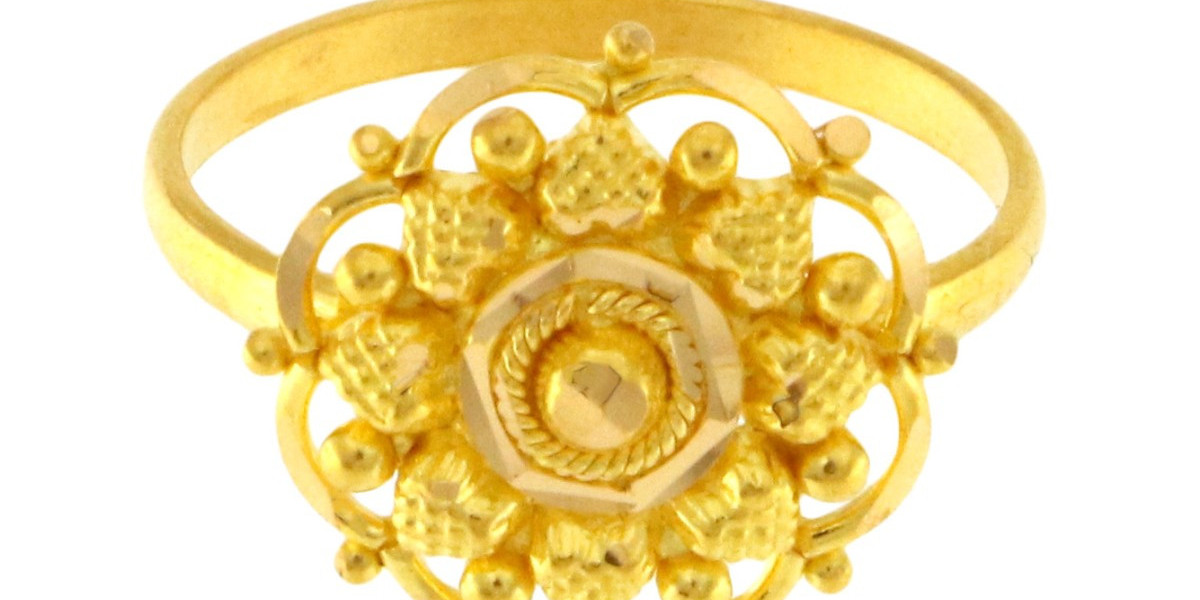Indian gold jewellery has long been cherished for its exquisite craftsmanship, intricate designs, and rich cultural significance. Among the most popular forms of gold jewellery, the indian gold ring design stands out for its beauty, elegance, and versatility. Whether it’s for a wedding, an auspicious occasion, or everyday wear, gold rings in India are a symbol of wealth, prosperity, and tradition. In this article, we explore the world of Indian gold ring designs, their significance, and the latest trends.
The Historical Significance of Gold Rings in India
Gold has been a precious metal in Indian culture for centuries. The ancient Indian civilization, from the Harappan period to the mighty Mauryan empire, showcased gold in many forms, including rings, bracelets, and necklaces. These pieces were often adorned with gemstones, intricate engravings, and symbolic motifs, reflecting the wearer’s status and wealth.
Gold rings, in particular, have a long history as symbols of commitment and love. In traditional Indian weddings, gold rings are exchanged between the bride and groom as part of the marital vows. The design of these rings often features a combination of aesthetic beauty and symbolic meaning, making them cherished heirlooms passed down through generations.
Traditional Indian Gold Ring Designs
The richness of Indian gold ring designs lies in their diversity, often influenced by the various cultural regions of India. Some of the most prominent traditional designs include:
Temple Jewellery Rings: Originating from the temples of Southern India, these rings are often characterized by detailed carvings of deities like Lord Ganesha, Goddess Lakshmi, and other divine figures. The craftsmanship involved in temple jewellery is highly intricate, and the designs are often regal and majestic, with a touch of spirituality.
Kundalini Rings: Kundalini rings are a blend of traditional and spiritual significance. These rings usually feature intricate patterns of intertwining coils, often signifying the awakening of energy. The rings can also feature gemstones like diamonds, emeralds, or rubies.
Jadau Rings: Jadau jewellery is a Mughal-era technique known for its opulence. These rings are made by embedding precious stones in gold using a method that doesn’t require any soldering. The result is a luxurious piece that showcases gemstones in all their splendor.
Filigree Rings: Popular in regions like Odisha and Bengal, filigree rings are made by intertwining delicate threads of gold into intricate patterns. These designs often resemble lacework, making them light, airy, and elegant.
Polki Rings: Polki is uncut diamond jewellery, and these rings feature rough diamonds set in a gold band. The uncut diamonds add a raw, natural beauty to the ring, making it a popular choice for both traditional and contemporary looks.
Modern Indian Gold Ring Designs
While traditional Indian gold ring designs remain a favorite, modern influences have also left their mark on the jewellery industry. Contemporary Indian gold ring designs are a fusion of the past and present, combining traditional motifs with sleek, minimalist styles. Here are some popular modern trends:
Minimalist Gold Rings: Simple yet sophisticated, minimalist gold rings are perfect for everyday wear. With clean lines and subtle designs, these rings appeal to those who prefer elegance without excess. Some feature small diamonds or gemstones, while others are plain bands, offering understated beauty.
Stackable Rings: Stackable rings are a trendy style that allows the wearer to mix and match different designs. These rings are often worn in sets, creating a layered look. Stackable rings can be embellished with diamonds, colored stones, or unique patterns, offering versatility and personalization.
Geometric Designs: Inspired by modern art and architecture, geometric rings feature sharp angles, triangles, and symmetrical patterns. These rings appeal to the fashion-forward individual who wants a statement piece that’s both artistic and stylish.
Fusion Gold Rings: Fusion designs combine traditional gold with modern elements like platinum, silver, or even enamel. These rings are a perfect blend of the old and the new, appealing to young Indians who want to wear something that speaks to both their heritage and contemporary taste.
Choosing the Perfect Indian Gold Ring Design
When selecting an Indian gold ring, it’s essential to consider factors like the occasion, personal style, and cultural significance. For weddings or special ceremonies, you may prefer an intricate design with gemstones or symbolic carvings. For everyday wear, you might opt for a minimalist or stackable design that complements your personal style.
Additionally, the purity of gold is an important factor to consider. In India, gold is typically measured in karats, with 22k and 24k being the most popular choices. 22k gold offers a balance between durability and purity, while 24k gold is the purest form but is softer and less durable.
Conclusion
Indian gold rings are more than just accessories—they are a reflection of heritage, 22ct solid gold ring craftsmanship, and personal style. Whether you opt for a traditional design steeped in cultural significance or a modern ring that incorporates the latest trends, Indian gold rings are timeless pieces that never go out of style. With their beauty and versatility, these rings are not just pieces of jewellery but treasures that carry meaning and memories for generations to come.






